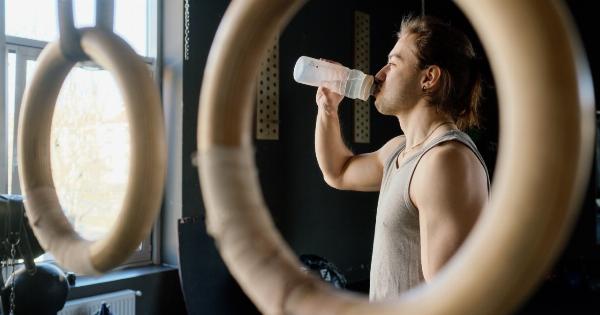Gymnastics and alcohol are two words that may not seem to have much in common at first glance. Gymnastics is a disciplined, physically demanding sport that requires focus, precision, and determination.
On the other hand, alcohol is often associated with relaxation, parties, and letting loose. However, upon deeper exploration, it becomes evident that there is an unexpected relationship between gymnastics and alcohol that goes beyond what meets the eye.
The Physical Toll of Gymnastics
Gymnastics is undeniably challenging for the athletes who participate in it. The physical toll that gymnastics takes on the body is immense.
With demanding routines that include flips, twists, and high-level acrobatics, gymnasts push their bodies to their limits. This physical stress can lead to frequent injuries, chronic pain, and even long-term health complications.
In an attempt to cope with the physically demanding nature of their sport, gymnasts often turn to alcohol as a means of relaxation and pain relief.
The intense training sessions and competitions leave them exhausted both mentally and physically, and alcohol provides a temporary escape from the rigorous demands of their sport.
The Mental Pressure of Gymnastics
Not only does gymnastics take a toll on the body, but it also places immense mental pressure on athletes. As a gymnast, one must constantly strive for perfection, execute complex routines flawlessly, and meet the expectations of coaches and judges.
The fear of failure and the pressure to perform at a high level can be overwhelming.
Alcohol can often serve as a coping mechanism for gymnasts dealing with the mental pressure of their sport. It provides a temporary reprieve from the constant mental exhaustion and allows them to momentarily let go of their worries and expectations.
Unfortunately, this reliance on alcohol can easily develop into unhealthy habits and dependency.
Social Influences on Gymnasts
Gymnasts often find themselves in social settings where alcohol is readily available. Whether it be celebratory gatherings, team parties, or social events with peers, alcohol is commonly present.
The desire to fit in and engage in the social aspect of their sport can lead gymnasts to consume alcohol, even if it goes against their better judgment.
Furthermore, the pressure to maintain a certain body image in gymnastics can be immense. Gymnasts are expected to have lean, muscular physiques, and alcohol can negatively impact one’s physical appearance.
Despite this, gymnasts may choose to drink alcohol in social situations, influenced by the desire to fit in rather than prioritizing their own health.
The Risks of Alcohol Consumption in Gymnastics
While alcohol may provide temporary relief for gymnasts, it is important to address the risks associated with its consumption. Gymnastics requires athleticism, coordination, and quick reflexes, all of which can be hindered by alcohol.
Impaired judgment and reduced reaction times increase the risk of accidents and injuries during training and competition.
Additionally, alcohol can hinder the body’s ability to recover and repair, leading to delayed healing of injuries and prolonged physical pain.
Gymnastics already places significant strain on the body, so adding alcohol into the equation can exacerbate these issues and potentially lead to long-term damage.
The Importance of Support and Alternatives
Recognizing the relationship between gymnastics and alcohol is crucial for the well-being of gymnasts.
It is essential for coaches, parents, and the gymnastics community as a whole to provide support systems that address the physical and mental demands of the sport. This includes creating environments where gymnasts feel comfortable expressing their concerns, seeking help when needed, and exploring healthy coping strategies.
Alternatives to alcohol must also be explored and promoted within the gymnastics community. Encouraging activities such as yoga, meditation, and counseling can provide gymnasts with healthy outlets to manage physical and mental stress.
These alternatives can contribute to athletes’ overall well-being, promoting their long-term health and success in gymnastics.
Conclusion
Gymnastics and alcohol may seem like an unlikely pairing, but the unexpected relationship between the two goes beyond surface-level assumptions.
The physical toll, mental pressure, social influences, and desire for temporary relief all contribute to gymnasts’ connection with alcohol. It is essential to recognize the risks associated with this relationship and promote healthier alternatives within the gymnastics community.
By prioritizing the well-being of gymnasts and providing the necessary support, we can ensure a safer and more sustainable environment for these incredible athletes.





























